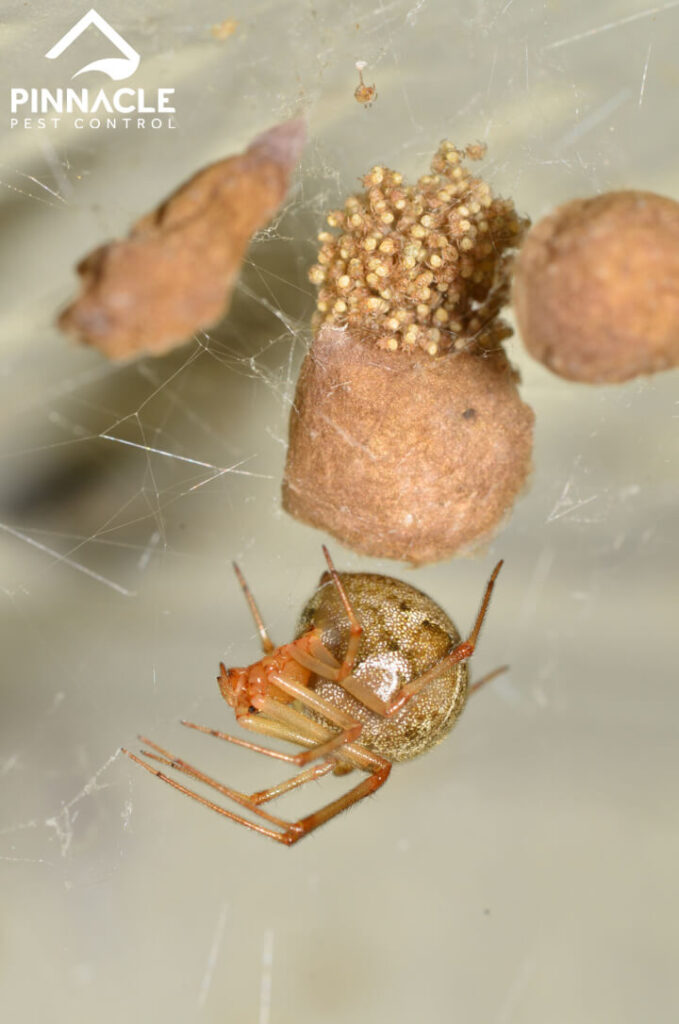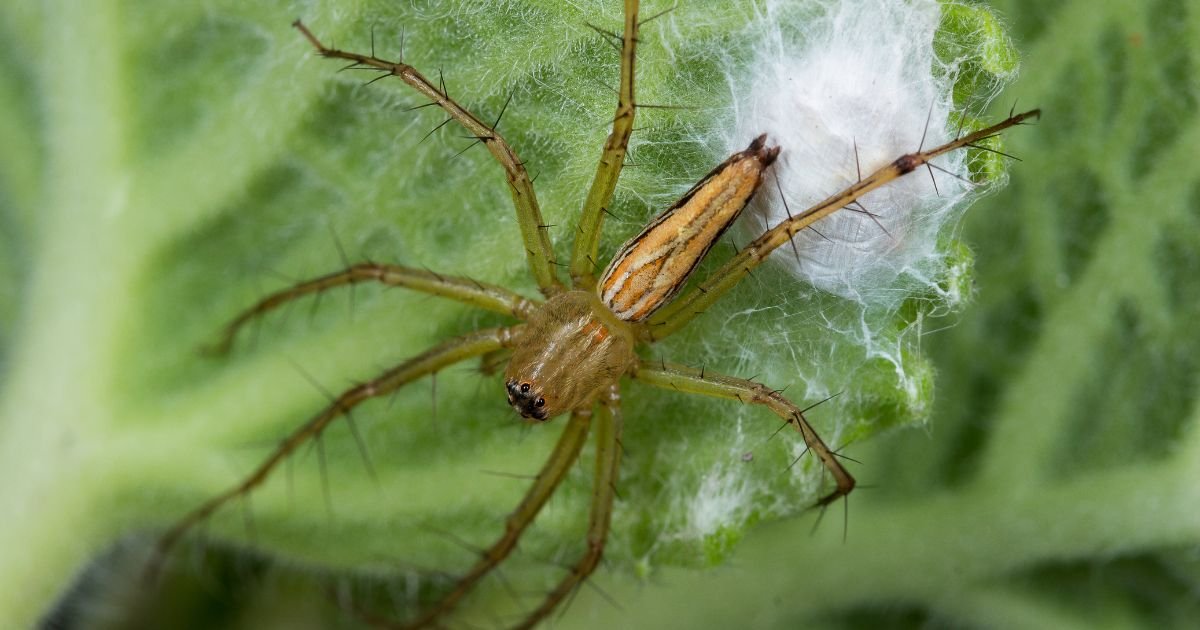To determine if spider eggs have hatched, observe for small spiderlings emerging from the egg sac. Spider eggs hatch when conditions are favorable, such as warmth and humidity, leading to the emergence of young spiders.
You may notice tiny spiders scattering away from the sac upon hatching, indicating a successful hatching process. This event marks the beginning of a new generation of spiders ready to explore their surroundings. By closely monitoring the egg sac, you can witness the fascinating moment when spider eggs hatch, bringing forth a new chapter in the life cycle of these arachnids.
Introduction To Spider Egg Identification
Discovering if spider eggs have hatched involves observing the empty sacs or tiny spiderlings in the vicinity. Look for signs like thin webs or small spiders nearby to confirm the hatching process. Monitoring the egg sac closely can provide valuable insights into the life cycle of spiders.
Characteristics Of Spider Eggs
Spider eggs come in various shapes, sizes, and colors, depending on the species of spider. They are typically round or oval, and may be white, yellow, or brown. Some species may even have a greenish or bluish tint to their eggs. The surface of spider eggs is usually smooth and shiny, and they are often found in clusters or sacs, which can be attached to surfaces such as leaves, branches, or walls.
Importance Of Monitoring Spider Eggs
Monitoring spider eggs is crucial for understanding the reproductive behavior of spiders and their population dynamics. It can provide valuable insights into the presence and distribution of different spider species in a particular area. Furthermore, identifying hatched spider eggs can help in determining the abundance of spiderlings and their potential impact on local ecosystems.

Credit: sciencing.com
Visual Changes In Spider Egg Sacs
Visual changes in spider egg sacs can provide important clues about the hatching process.
Color Transformations
Initially, the egg sac may have a white or cream color.
Shape And Size Alterations
Egg sacs may become smaller and shrink in size before hatching.
Behavioral Signs Of Impending Hatch
Spider eggs can take anywhere from a few days to several weeks to hatch, depending on the species. However, there are behavioral signs you can look out for to know if the spider eggs have hatched. These signs include the presence of spiderlings, discarded egg sacs, and increased spider activity in the area.
When it comes to spider eggs, it can be difficult to tell when they are going to hatch. However, there are some behavioral signs that can indicate when the eggs are close to hatching. In this article, we will discuss the movement within the egg sac and changes in the mother spider’s behavior.
Movement Within The Egg Sac
One of the most obvious signs that spider eggs are about to hatch is movement within the egg sac. You may be able to see the eggs moving around inside the sac. This movement is caused by the spiderlings inside the eggs starting to move around as they get ready to hatch. If you notice movement within the egg sac, it is a good indication that the spider eggs are about to hatch.
Changes In The Mother Spider’s Behavior
Another sign that spider eggs are about to hatch is changes in the mother spider’s behavior. As the eggs get closer to hatching, the mother spider may become more protective of the egg sac. She may spend more time guarding the eggs and may become more aggressive towards other animals that come near the sac. Additionally, the mother spider may stop eating or may eat less as the eggs get closer to hatching. These behavioral changes are a good indication that the spider eggs are about to hatch. In conclusion, if you notice movement within the egg sac or changes in the mother spider’s behavior, it is likely that the spider eggs are about to hatch. Keep an eye on the eggs and be prepared for the spiderlings to emerge at any time.
Environmental Cues
To determine if spider eggs have hatched, observe environmental cues such as the presence of tiny spiderlings in the vicinity of the egg sac. Look for signs of activity, such as movement or web-building, to confirm the hatching of the eggs.
Temperature And Humidity Effects
When it comes to spider eggs hatching, temperature and humidity play crucial roles in signaling the right conditions for the process. Spiders are ectothermic creatures, meaning their body temperature depends on their environment. The temperature at which spider eggs hatch varies depending on the species. Generally, warmer temperatures expedite the hatching process, while cooler temperatures delay it. Maintaining the appropriate humidity levels is equally important. Spiders prefer higher humidity levels for optimal egg hatching. High humidity keeps the eggs moisturized, preventing them from drying out. In contrast, low humidity can inhibit or even prevent the eggs from hatching altogether.
Seasonal Influences
Apart from temperature and humidity, seasonal influences also affect spider egg hatching. Spiders are highly attuned to the changing seasons, and their reproductive cycles are often synchronized with specific times of the year. In many spider species, eggs are laid in the fall and winter months. This is because the cooler temperatures and longer nights during these seasons provide favorable conditions for egg development. The eggs remain dormant throughout the winter, benefiting from the cold period before hatching in the spring or summer when the environment becomes more hospitable. Understanding these seasonal influences can help you predict when spider eggs are likely to hatch. By observing the timing of egg-laying and considering the local climate, you can estimate the approximate hatching period and be prepared for the emergence of spiderlings. In conclusion, environmental cues, such as temperature, humidity, and seasonal influences, are essential factors that determine when spider eggs hatch. By monitoring these cues, you can gain insights into the hatching process and better understand the life cycle of spiders. Whether you find spider egg sacs in your garden or encounter them in the wild, paying attention to these environmental cues will help you know if spider eggs have hatched or are about to hatch.
Physical Evidence Of Hatching
Physical evidence of hatching can be a fascinating sight for those intrigued by the life cycle of spiders. Observing the aftermath of spider egg hatching provides insight into the development of these arachnids. When it comes to identifying whether spider eggs have hatched, looking for physical signs is crucial. Here are some ways to determine if spider eggs have hatched based on the evidence left behind.
Empty Egg Sac Discovery
Discovering an empty egg sac is a strong indicator that spider eggs have hatched. The sac, once plump with eggs, may appear deflated and appear to have tiny slits or openings where the spiderlings emerged. This physical transformation of the sac is clear evidence of successful hatching.
Presence Of Spiderlings
Finding the presence of spiderlings is the most direct evidence of hatching. These minuscule creatures, often clustering near the original egg sac, can be observed with the naked eye or a magnifying glass. The sight of active spiderlings confirms that the eggs have indeed hatched.

Credit: pinnaclepest.com
Immediate Steps After Spotting Hatched Eggs
Once you spot hatched spider eggs, take immediate action to prevent a potential infestation. Remove the eggs and their webs carefully, seal any cracks or openings, and consult a pest control professional for further assistance. Stay proactive to keep your home spider-free.
Safe Removal Of Spiderlings
Once you have spotted hatched spider eggs, it is important to remove the spiderlings as soon as possible to prevent them from spreading further. To do this safely, you should wear gloves and use a soft brush to gently sweep the spiderlings into a container. Avoid using your bare hands as some spider species can be venomous and dangerous.
Cleaning The Area
After safely removing the spiderlings, it is crucial to clean the area thoroughly. Use a vacuum cleaner to remove any remaining eggs or webs. You can also wipe the area with a damp cloth or use a spider repellent spray to deter any remaining spiders from returning. It is important to ensure that you dispose of the container with the spiderlings and any spider webs in a sealed plastic bag to prevent further infestation.
Preventing Future Infestations
To prevent future spider infestations, you can take a few precautionary measures such as sealing cracks and crevices in your home, keeping your home clutter-free, and regularly cleaning your home. Additionally, you can use natural spider repellents such as essential oils or citrus peels to keep spiders at bay. By taking these steps, you can avoid future infestations and keep your home spider-free.
Preventive Measures For Future Infestations
When it comes to preventing future infestations after spider eggs have hatched, taking proactive measures is essential.
Natural Repellents
- Use peppermint oil or vinegar as natural spider repellents.
- Plant lavender or eucalyptus around the house to deter spiders.
Regular Cleaning And Inspection
- Vacuum and dust regularly to remove spider webs and eggs.
- Seal cracks and crevices to prevent spiders from entering your home.
Credit: www.quora.com
Frequently Asked Questions
How Long Does It Take For Spider Eggs To Hatch?
Spider eggs typically take around 10 to 30 days to hatch, depending on the species and environmental conditions. The eggs are carefully guarded by the female spider until they hatch, ensuring their safety and providing them with the necessary warmth and humidity for development.
What Do Spider Hatchlings Look Like?
Spider hatchlings emerge from their eggs as tiny, miniature versions of adult spiders. They are usually pale in color and have a soft exoskeleton. While their appearance may vary slightly between species, they generally resemble miniature versions of their parents, complete with all eight legs.
How Can You Tell If Spider Eggs Have Hatched?
You can tell if spider eggs have hatched by closely inspecting the egg sac. Once the eggs have hatched, the sac will appear deflated or partially collapsed. Additionally, you may notice tiny spiderlings crawling around the vicinity of the sac, indicating that the eggs have successfully hatched and the spiderlings have emerged.
Conclusion
Identifying hatched spider eggs involves observing the web for baby spiders. Look for small spiders or empty egg sacs. It’s important to proceed with caution and seek professional help if necessary. By staying informed, you can ensure the safety of your surroundings.
Related posts:

I’m MD Tanvir, and I bring years of expertise gained from working closely with pest control companies to the forefront. My journey in the industry has inspired me to launch Bug Battler, a platform aimed at equipping people with the know-how to combat pests autonomously. Through Bug Battler, I aim to empower individuals with practical insights to tackle pest infestations effectively.

